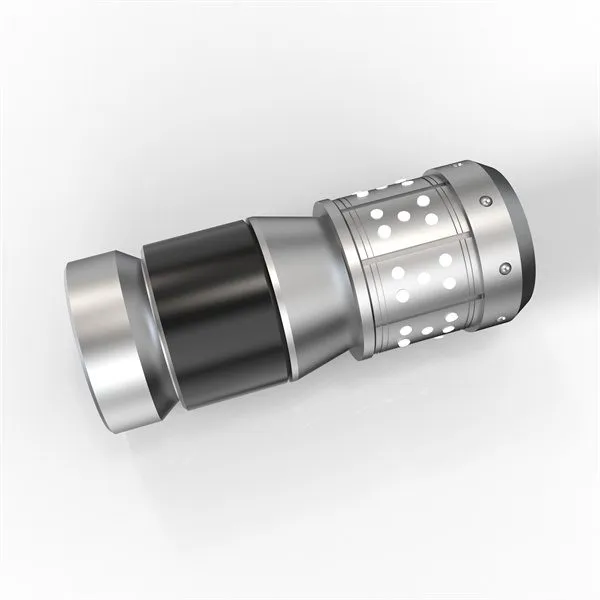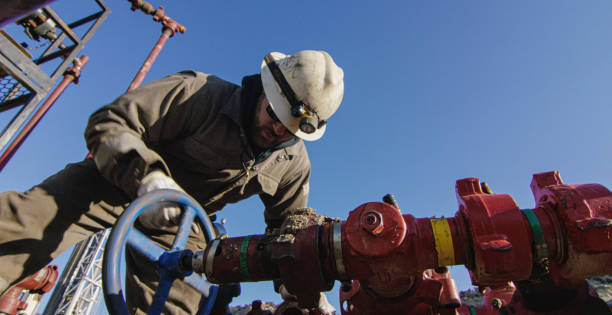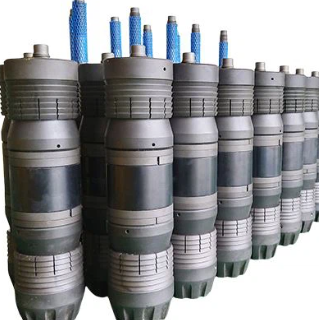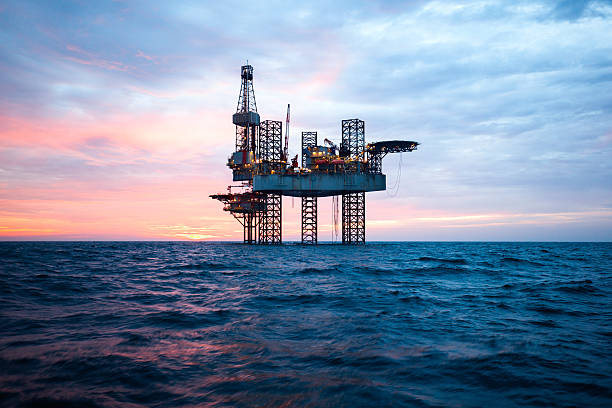English
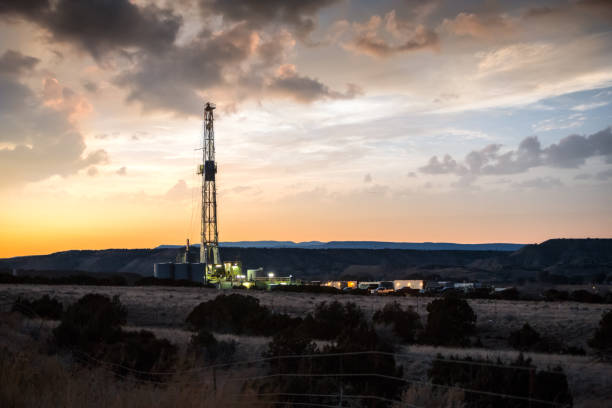
Oil well for sale
In-depth analysis of key considerations and strategies for purchasing producing oil wells

When “Oil Well for Sale” appears on the market, it may represent a unique energy asset investment opportunity, or it may hide complex risks and challenges. Unlike buying ordinary commodities, buying an oil well means getting involved in a technology-intensive, regulated field that is deeply affected by commodity prices. This article will unveil the veil of oil well transactions for you and provide a decision-making guide from a professional perspective.
- Oil Well Sale Market: Diversified Investment Targets
- Producing Wells:
Core Value: Providing immediate cash flow. The most favored type by investors, the price is based on proven reserves, current production, production costs and expected future returns.
Evaluation points: Production decline curve analysis, operating costs (OPEX), oil price sensitivity, reservoir pressure maintenance status, equipment aging.
- Shutin Wells:
Potential opportunities: Oil wells that are shut down due to low oil prices, high maintenance costs or temporary technical problems. The price is usually low.
Key considerations: Restart cost and technical feasibility, remaining reserve potential, expected improvement in the market environment, potential impact on the reservoir during the shut-in period.
- Stripper Wells/Marginal Wells:
Features: Daily production is very low (usually less than 15 barrels of oil equivalent/day), but it may still be profitable if operating costs are properly controlled.
Attractiveness: Low acquisition cost, suitable for small-scale investors or operators focused on optimizing operational efficiency. Need to pay attention to local tax incentives. - Non-Operated Working Interests:
Model: Purchase partial ownership of existing producing wells (non-operator interests).
Advantages: No need to directly manage operations, the operator is responsible for daily production.
Risks: Limited influence on the operator’s decision (such as increasing capital investment), and need to bear proportional costs. - Exploration blocks/undrilled interests:
High risk, high return: Involves the purchase of leases or exploration rights, and requires subsequent investment in drilling funds.
Core: The quality and prospect interpretation of geological assessment data (seismic data, adjacent well data) are crucial. Strictly speaking, it does not belong to the sale of “oil wells”, but is often related. - Oil well value assessment: Deep mining beyond surface data
Purchasing oil wells is not a simple “price by barrel”, and requires comprehensive multi-dimensional professional analysis:
- Reservoir engineering data (core):
Production history and decline curve: Analyze the production decline trend and predict future production and recoverable reserves (EUR). A steady decline is better than a sharp decline.
Pressure data: Understand the energy status of the reservoir and determine whether artificial lift (such as pumping units) or secondary/tertiary oil recovery measures are needed.
PVT analysis: Crude oil properties (density, viscosity, gas-oil ratio) affect the extraction method and value. - Engineering status and equipment audit:
Downhole status: Casing and tubing integrity? Are there any corrosion, scaling, or sand plugging problems? What is the cost of repair?
Surface facilities: What are the pumping units, separators, storage tanks, and pipelines? Do they comply with safety and environmental regulations? Do they need to be upgraded?
Artificial lift system: What is the type (beam pumping unit, screw pump, submersible pump) and efficiency? What is the maintenance record?
- Economic model construction:
Cash flow forecast: Based on production forecast, oil price assumptions (scenario analysis is required), operating costs (electricity, chemicals, labor, maintenance, transportation, processing fees), taxes (royalties, property taxes, income taxes), and insurance.
Key indicator calculations: Net present value (NPV), internal rate of return (IRR), and payback period.
Sensitivity analysis: Focus on testing the impact of oil price fluctuations, production changes, and cost overruns on economic benefits.
- Legal and compliance due diligence (critical):
Title: Confirm that the seller has clear and unblemished mineral rights (lease) and mining rights. Verification of historical transfer records.
Environmental compliance: Are there any historical leaks or contamination? Soil/groundwater test reports? Is it in compliance with waste treatment and disposal regulations (such as oily sludge, produced water)? Are there any outstanding environmental fines or liabilities?
Regulatory permits: Does the well have a valid drilling, production, injection (if applicable) license? Does the transfer require regulatory approval?
Contract review: Surface use agreement, pipeline transportation agreement, processing agreement, related contracts (if applicable), employee contracts (such as receiving operations).
Abandonment liability estimate (Abandonment Liability): Estimated costs for future plugging and site restoration (Reclamation). This is a major liability item!
III. Oil well transaction process: proceed carefully at every step
- Preliminary screening and confidentiality agreement (NDA): Screen targets based on geographic location, production, and price range, and sign NDA to obtain detailed information packages.
- Preliminary Assessment and Letter of Intent (LOI): Analyze the data package, conduct preliminary economic assessment, and submit an LOI containing key terms (price range, due diligence period, and delivery conditions).
- In-depth Due Diligence:
Data room review: Comprehensive review of geological, engineering, production, financial, and legal documents.
Site survey: On-site inspection of oil wells, facilities, environmental conditions, and communication with on-site personnel.
Third-party verification: Hire independent engineers to evaluate reserves/value, lawyers to review property rights and compliance, and environmental consultants to evaluate risks. - Final Negotiation and Purchase and Sales Agreement (PSA): Adjust the offer and terms based on the due diligence results, negotiate and sign a legally binding PSA, clarify the delivery conditions, payment method, division of responsibilities (especially environmental historical responsibilities), and warranty and indemnity terms.
- Pre-closing preparation and regulatory approval: Satisfy all conditions in the PSA (such as funds in place, regulatory approval, and title insurance), and conduct a final settlement audit.
- Closing: Sign the closing documents, pay the money, complete the equity transfer registration, take over the operation (or arrange the operator).
IV. Key risks and avoidance strategies of oil well investment
Risk of oil price fluctuations: The biggest uncertainty. Strategy: Conservative oil price forecast, cost control, and use of hedging tools.
Risk of production falling short of expectations: Reservoir complexity exceeds expectations or equipment failure. Strategy: Rely on professional independent evaluation, detailed engineering review, and set production guarantee clauses (if any).
Risk of operating cost overruns: Equipment aging, labor increase, and increased environmental protection requirements. Strategy: Detailed historical cost review, on-site equipment status assessment, and sufficient maintenance budget.
Environmental liability risk: Historical or future pollution liability may be huge. Strategy: Thorough environmental due diligence, require the seller to provide environmental compensation guarantee, purchase environmental liability insurance, and clearly define responsibilities before and after closing.
Regulatory and policy risks: Environmental regulations are becoming stricter, and tax and fee policies are adjusted. Strategy: Pay close attention to industry policy trends and evaluate the local regulatory environment.
Operational risks (such as self-operation): safety incidents, inefficient operations. Strategy: Hire experienced site managers, establish strict safety procedures, or choose non-operator equity investment.
V. Why is it necessary to seek professional consultants?
Geological and reservoir engineers: Evaluate reserve potential and production dynamics.
Petroleum engineers: Review equipment conditions, evaluate operating costs and maintenance needs.
Experienced land/property lawyers: Ensure clear property rights and handle complex mineral rights issues.
Environmental consultants/lawyers: Identify and quantify environmental risks.
Tax consultants: Optimize transaction structures and handle special tax issues in the mining industry (such as depletion discounts).
Financial consultants/M&A intermediaries: Build financial models, assist in negotiations, and manage transaction processes.


